Calendula - a Versatile Medicinal
How to grow, gather, and prepare Calendula as food and medicine
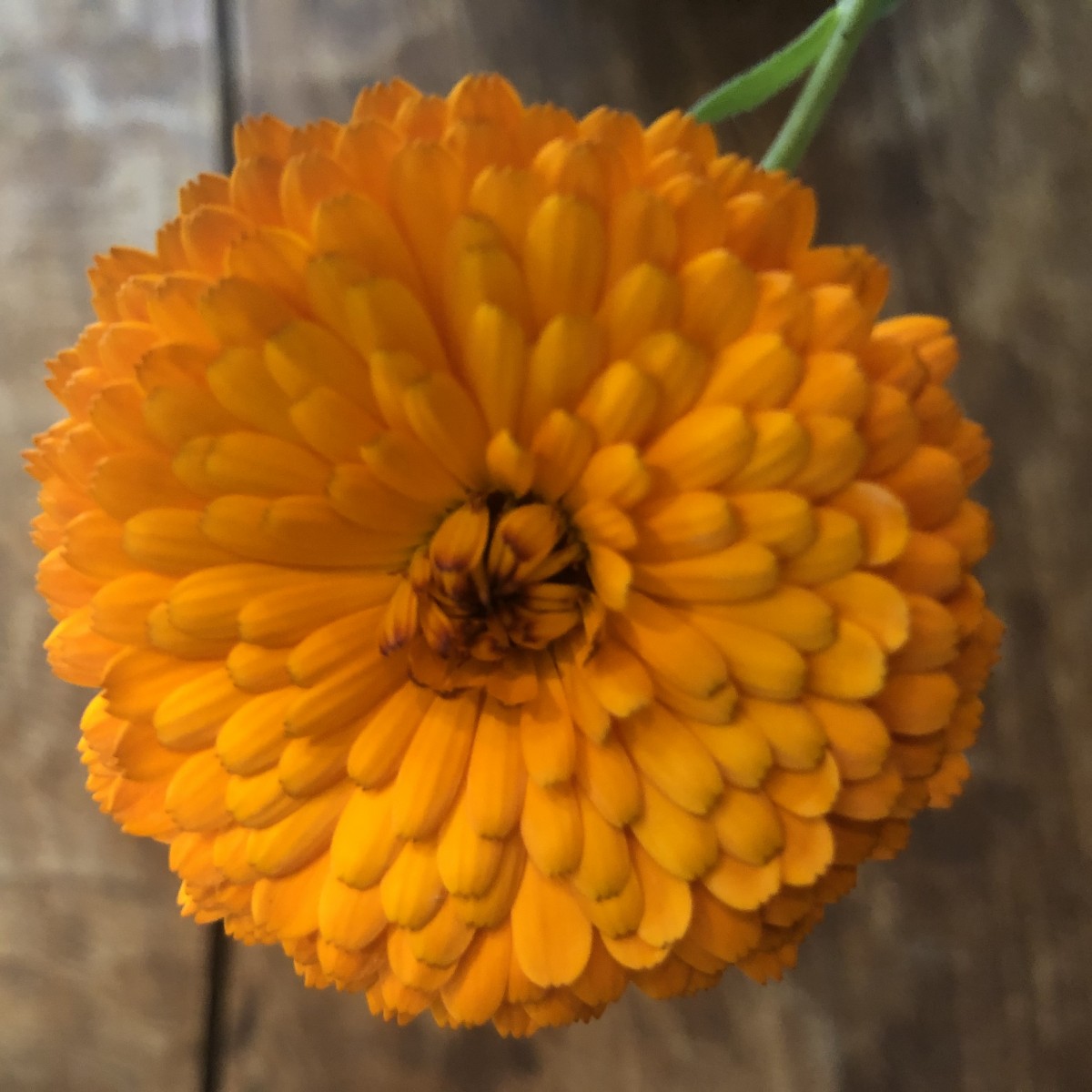 Calendula (Calendula officinalis) a highly versatile medicinal plant, is one of the easiest herbs to grow, and a must for every herbal garden. It reseeds itself with ease, coming back every winter without becoming invasive.
Calendula (Calendula officinalis) a highly versatile medicinal plant, is one of the easiest herbs to grow, and a must for every herbal garden. It reseeds itself with ease, coming back every winter without becoming invasive.
Calendula’s name derives from the Latin calendae, referring to its long blooming season. We grow two different calendula species, the more traditionally used Calendula officinalis, and C. arvensis, which is native to central and southern Europe, and grows wild in Israel.
Often wild species are medicinally more potent than their cultured counterparts, however, Calendula officinalis has been cultured to improve its medicinal qualities, and is an exception to this rule.
Calendula has been used for centuries, both internally and topically, to heal wounds, burns, and rashes. The sunshiny flowers are a traditional remedy for supporting the immune system and lifting the spirits. The edible ray florets of the flower heads are bursting with antioxidant compounds, making them a welcome addition to any dish.
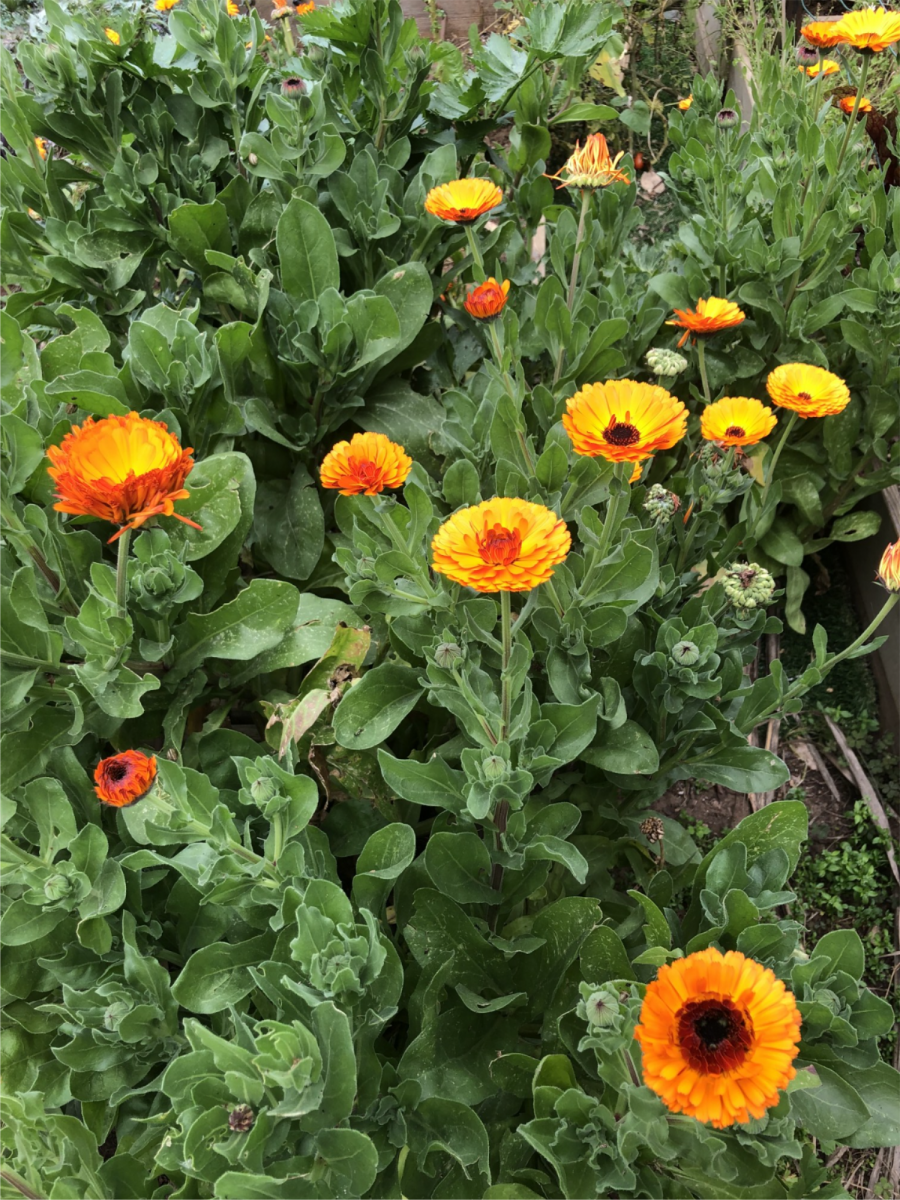
Growing & Harvesting Calendula
Calendula prefers cooler temperatures and well drained soil, so it is best to find a spot with a bit of summer shade to ensure a continual bloom from winter to the hotter summer months.
Calendula seeds need a cool and damp environment to germinate well. Seeds are best sown directly in the ground during late fall. If you live in an area where temperatures fall below freezing, wait until all danger of frost has passed before planting seeds. In order to properly germinate, Calendula seeds must be covered with 0.5-1.5cm of soil.
There are many varieties of calendula, with many shades of yellow, ranging from dark orange to bright yellow. There are multi-petaled varieties and varieties with more resin at the sticky base of the flower. All types of Calendula officinalis can be used as food or medicine. Let the aroma and stickiness of the flowers guide you in finding your personal favorite.
To promote and prolong the plant’s flowering season, flowers should be picked every 2-3 days. If you let the plants go to seed, they will stop producing new flowers. As you’re picking, it is best to deadhead the flowers that have started to go to seed. Once mid-summer sets in and the weather is hot, I usually leave the plants to develop plenty of seeds for next year’s crop.
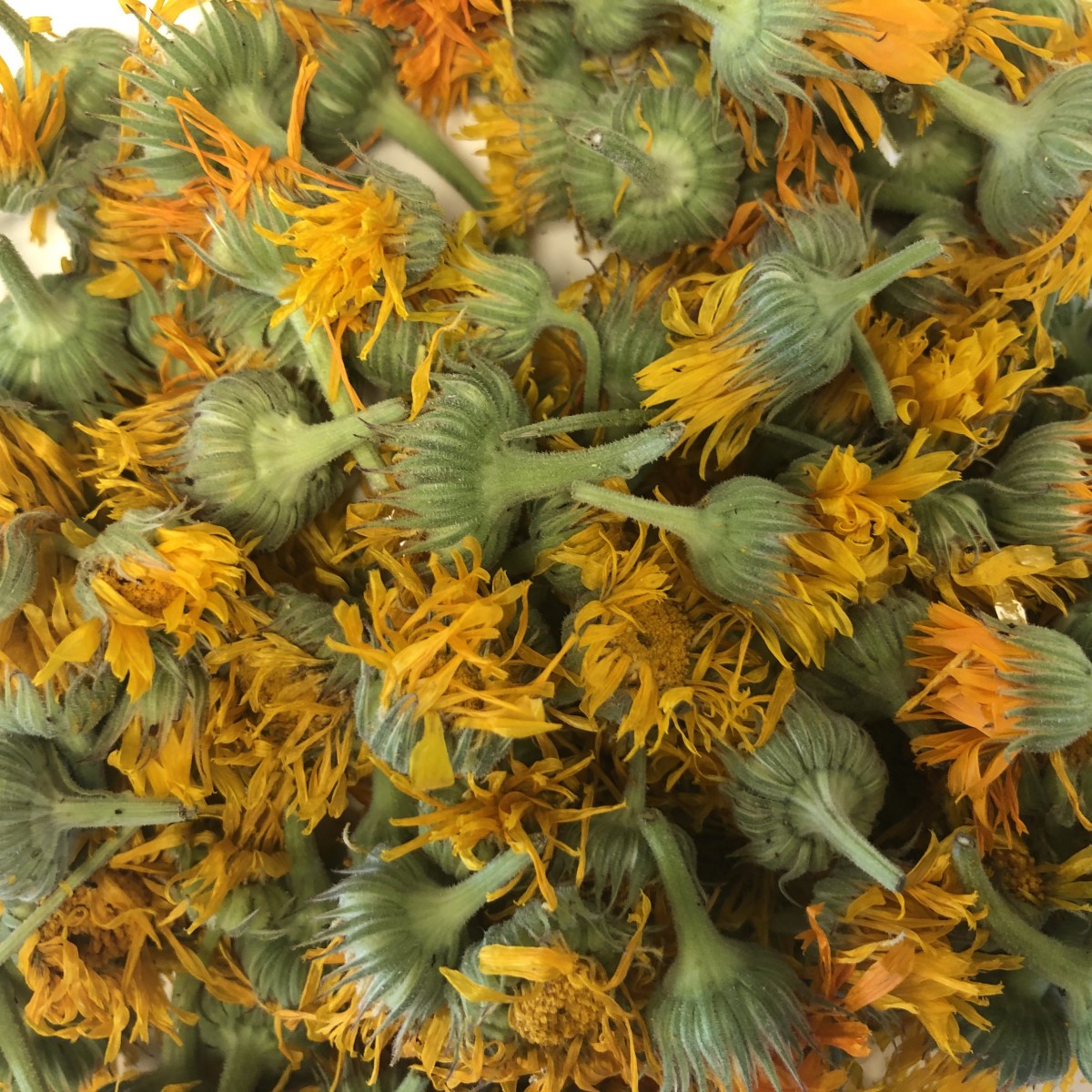
It’s best to pick the flowers in the morning once the dew has evaporated. Spread them to dry on screens or airy baskets in a well-ventilated, warm area. Be sure the entire flower head is dry before you store your harvest. The petals should be completely dried and crunchy and the green base of the flower head should be pliable and not overly moist. This may take a week to 7-10 days, depending on climate. Flowers are best stored in an airtight container in the refrigerator.
For medicinal preparations, be sure to use the entire dried flower, as the medicinal oils are found primarily in the resinous green bases of the flower heads.
Calendula’s petals are rich with antioxidant compounds and high in carotenoids, such as flavaxanthin and auroxanthin and are a welcome addition to any dish
Whole flowers can be used fresh or dried in soups and stews to enhance nutritional value, or used as a healing tea.
For use in salads, salsas, quiche, and frittatas, remove petals from the base of the flower heads to create an orange confetti to add the energy of sunlight to any dish.

Medicinal Benefits of Calendula
Herbal Actions:
- Anti-inflammatory
- Lymphagogue
- Vulnerary (promotes wound healing)
- Antibacterial
- Antifungal
- Emmenagogue (stimulates menstrual flow)
- Cholagogue (stimulates bile)
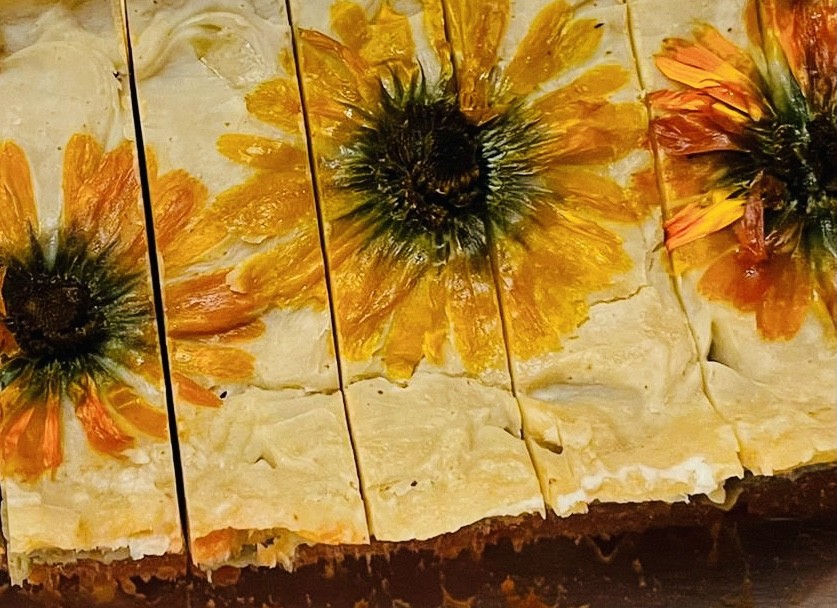
As mentioned previously, when using Calendula for medicinal purposes, it is best to use the whole flower, including the green base.
Among all its many applications, Calendula is best known for its ability to address a myriad of skin complaints, including rashes, stings, wounds, burns, abrasions, swellings, eczema, acne, insect bites, scrapes, bruises, chickenpox, cold sores, cervical dysplasia, diaper rash, cracked nipples from breastfeeding, and postpartum perineal tears. The carotenoids and astringent qualities contained in calendula reduce the signs of aging by decreasing the appearance of wrinkles and provide moisture and tone to the skin. On a cellular level, calendula also has the ability to help heal the after-effects of radioactive exposure, such as chemotherapy.
Calendula is also a wonderful digestive ally, and it’s one of the primary herbs recommended for GERD (gastroesophageal reflux disease), heartburn, peptic ulcers, and H. pylori.
Calendula is an outstanding herb for stimulating the lymphatic system and is often used to treat acute or chronically swollen lymph nodes resulting from respiratory infections, localized infections, and tonsillitis. Such activation of the lymphatic system also helps to build immunity and prevent infection.
It is also a good eye wash for conjunctivitis and dry itchy eyes.
Calendula extracts even have anti-cancer properties and have been known to benefit leukemia, breast, prostate, cervix, lung, pancreatic, and colon cancer.
Calendula even helps support our emotional state. It can be used as an antidepressant herb and when combined with other cheery flowers, such as rose (Rosa spp.), mimosa (Albizia julibrissin) and lavender (Lavandula angustifolia), it is helpful for addressing and healing grief and sadness.
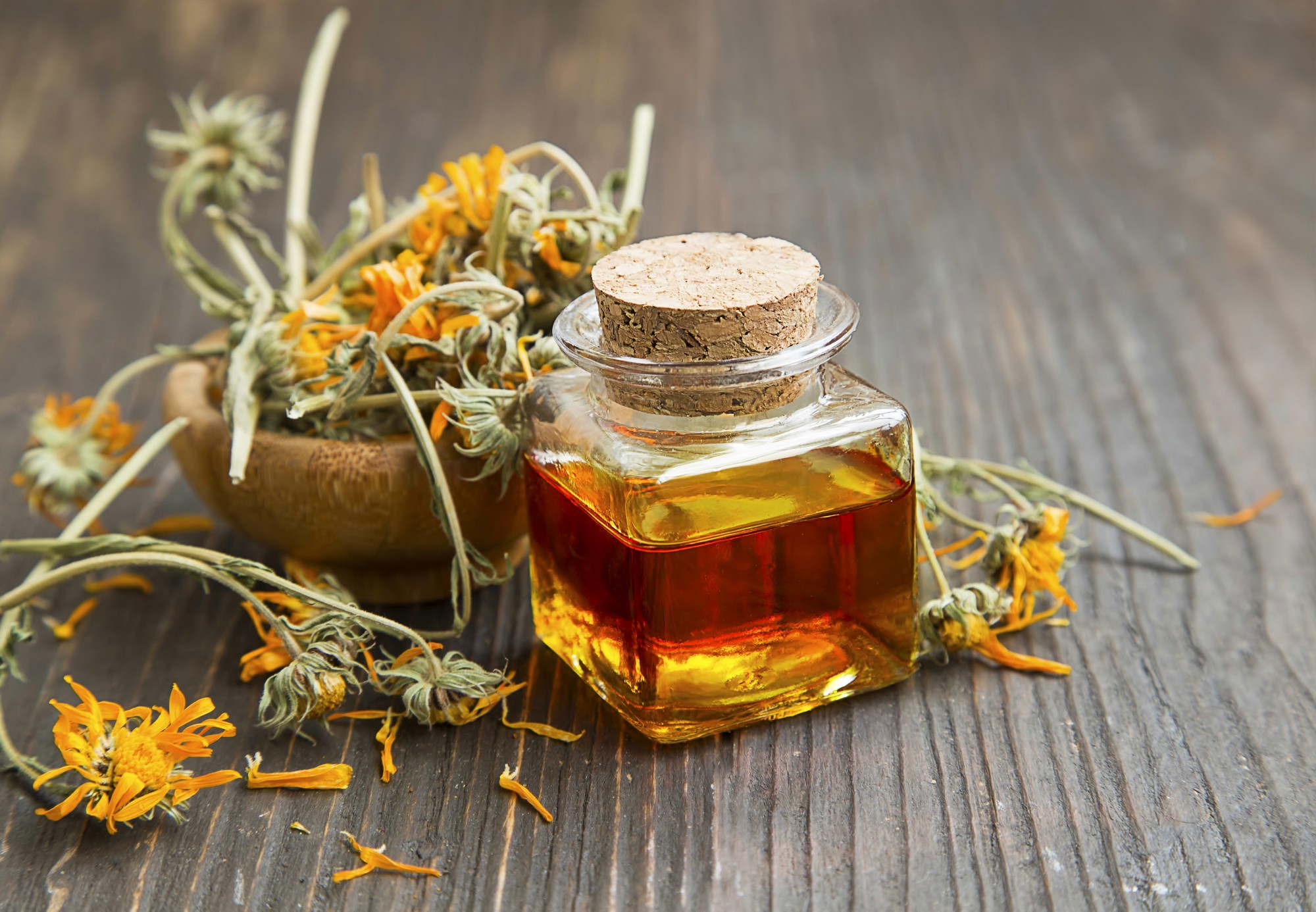
How to Make Calendula Oil
Herbal oils are made by infusing plants into high-quality oils that have a long shelf life and readily dissolve into the skin. I typically use extra-virgin olive oil, almond, or jojoba oil, but sesame, sunflower, and coconut oils are also a good option. Look for oils that are unrefined and cold-pressed or expeller-pressed.
This all-purpose herbal oil can be used on its own or as a base for salves or prepared into a cream or lotion.
Ingredients:
- 1 cup whole dried calendula flowers
- 1 cup extra-virgin olive oil (or substitute jojoba or almond oil)
Infused herbal oil can be made by heating the oil in a double boiler, or by doing a sun infusion. I personally prefer the latter, as the end product contains not only the synergetic effects of oil and calendula, but the warm healing properties of the sun as well.
Step 1: Dry your herbs. It is important to remember that oil can ferment or mold in the presence of water, so you’ll want to make sure all your tools are completely clean and dry.
Step 2: Combine the whole dried flowers with your oil of choice in a blender to make a thick, pesto-like consistency. This increases the surface area of the herb, leading to a more potent oil.
Step 3 for sun infusion: Place the herb/oil mixture in a sterilized glass jar, making sure the oil covers the herbs completely. Place in a warm sunny spot and cover with a woolen hat to prevent exposure to direct light. Let infuse for 2-6 weeks. Make sure you give it a gentle shake each day to eliminate any possible air bubbles that may have formed.
Step 3 for double boiler: Heat the herb/oil mixture slowly in a double boiler for 4-8 hours. Try not to let the oil get hotter than 43°C (a little warmer than bath water). Watch closely to make sure the water does not completely evaporate and the oil does not overheat. You do not want deep-fried herbs!
Step 4: After your oil has infused (the longer the infusion, the stronger your oil will be), strain it into a glass jar or measuring cup using a muslin cloth or cheesecloth. This will be easier to do if the oil is slightly warm. Place the cloth in a stainless-steel or ceramic strainer and pour in the oil/herb slurry. After the oil ceases to run through the cloth, wring out the herbal material with clean, dry hands or press with a potato ricer.
Step 5: Label and store. Make a label and cap your oil when it cools to room temperature (this prevents condensation from developing inside the jar).
Herbal-infused oils will typically last 2-3 years when refrigerated and one year unrefrigerated, depending on the oil's stability.

How to Make Calendula Salve
A salve is thicker than an infused oil and has extra staying power that’s amplified by the moisturizing and anti-inflammatory properties of beeswax. Essential oils can be added to the salve in the final step to give it extra healing power.
Ingredients:
- 4 oz infused calendula oil (Calendula officinalis) by volume
- 1 oz grated or beaded beeswax (substitute carnauba wax for a vegan salve)
- Salve jars (enough for 5 ounces total)
Step 1: Measure your oil, and bring it slowly up to 43.3°C in a double boiler
Step 2: For every 4 fluid ounces of oil, add 1 ounce of grated or beaded beeswax. Completely dissolve the beeswax and test consistency by placing a spoonful of the mixture in the freezer for two minutes. After 2 minutes, remove it, letting it warm to room temperature. If it’s too soft, add more beeswax. If it’s too hard, add a little more of the infused oil.
Step 3: If you would like to add essential oils, this would be the time to add a few drops. Pour the mixture into jars while still warm. Label the contents, and allow it to cool before capping.
Salves typically last one year unrefrigerated, and up to three years with refrigeration. .
Contraindications:
In certain situations, the application of herbal oils and salves is not recommended. Oils and salves hold in moisture and heat and are thus contraindicated for weepy skin conditions, infections, and fresh burns.
Avoid the use of oils and salves on poison ivy rashes, weepy eczema, pimples, boils, fresh sunburn, and fungal and bacterial skin infections. Another contraindication includes deep wounds and cuts. Instead of oil-based preparations, use water-based applications such as herbal compresses, soaks, baths, and poultices.
Safety and Contraindications:
Do not use calendula internally during pregnancy since it has traditionally been used to bring on menses. As a member of the Aster family, Calendula may cause a reaction for people who are highly sensitive to plants like ragweed (Ambrosia spp.) and chamomile (Matricaria recutita); this is rare, but sensitive individuals should proceed with caution when using calendula for the first time. Rare incidences of allergic contact dermatitis have occurred with the topical use of calendula.
Information in this article has been taken from the Chestnut School of Herbal Medicine
